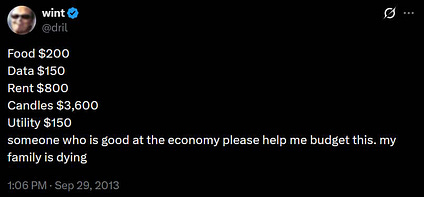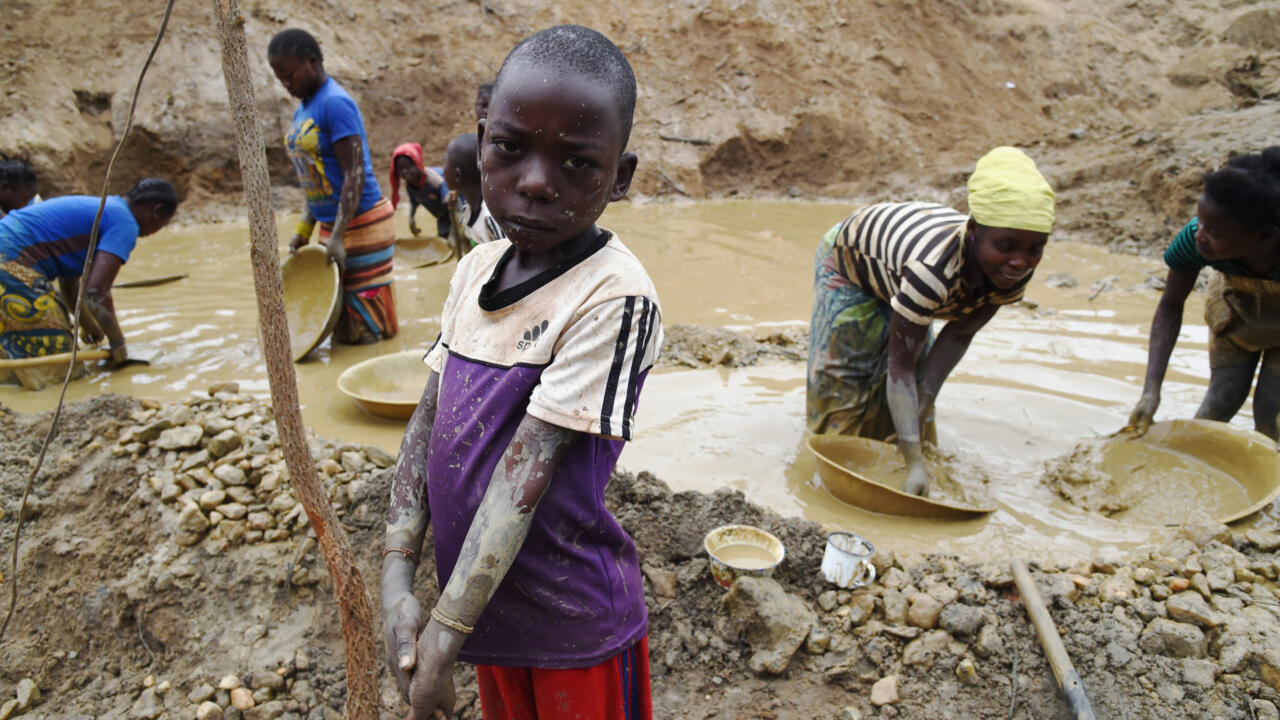Trump was already cutting low-income energy assistance – the shutdown is making things worse as cold weather arrives – The Conversation

Report on the U.S. Energy Affordability Crisis and its Implications for Sustainable Development Goals
Introduction
Rising energy costs in the United States present a significant challenge to national progress on several key Sustainable Development Goals (SDGs). A convergence of escalating energy bills, governmental administrative disruptions, and proposed cuts to federal assistance programs is exacerbating energy insecurity for millions of households. This report analyzes the crisis through the lens of the SDGs, focusing on the impacts on poverty (SDG 1), health (SDG 3), affordable energy (SDG 7), and inequality (SDG 10).
Energy Insecurity: A Barrier to SDG 1 (No Poverty) and SDG 7 (Affordable and Clean Energy)
The Scale of Energy Poverty
Recent data indicates a widespread energy affordability crisis, directly undermining the goal of ensuring access to affordable, reliable, and modern energy for all (SDG 7). The inability to meet basic energy needs is a primary indicator of poverty (SDG 1).
- A 2023 national survey found nearly one in four American households was unable to pay a full energy bill for at least one month.
- By 2025, polling indicated that nearly three in four Americans were concerned about rising energy costs.
- Conservative estimates suggest that over 3 million U.S. households have their power disconnected annually due to non-payment.
Governmental Actions and Institutional Failures
While the administration has acknowledged high energy prices as a national emergency, subsequent actions have threatened the primary federal mechanism for addressing energy poverty. The proposed elimination of funding for the Low Income Home Energy Assistance Program (LIHEAP) and the layoff of its entire staff create a significant institutional barrier to delivering aid, jeopardizing progress on SDG 1 and SDG 7.
In fiscal year 2023, LIHEAP was a critical tool for poverty reduction, providing US$6.1 billion in assistance to approximately 5.9 million households. However, the program’s reach has historically been limited, serving only 16% of eligible households in 2020. The current administrative disruptions and funding uncertainty further weaken this essential safety net.
Impacts on SDG 3 (Good Health and Well-being) and SDG 10 (Reduced Inequalities)
Public Health Consequences
The inability to afford energy forces households into dangerous trade-offs that directly compromise health and well-being, in opposition to the objectives of SDG 3.
- Nearly one in four households reported keeping their homes at unsafe temperatures to reduce costs.
- Research indicates that individuals forgo essential needs, such as prescription medications, to pay utility bills.
- Cold-related deaths have been trending upward, with preventable deaths from hypothermia occurring during cold snaps in 2024 and 2025. Continued access to heating assistance is critical to preventing such outcomes.
Exacerbating Inequalities
The burden of energy insecurity is not distributed equally, deepening existing disparities and working against SDG 10 (Reduced Inequalities). Research confirms that low-income communities and communities of color are disproportionately affected by high energy costs and utility disconnections. Without robust federal programs like LIHEAP, these vulnerable populations must rely on a patchwork of local nonprofits and faith-based organizations, which lack the resources and reach to address the systemic nature of the problem.
Policy Recommendations for Advancing the Sustainable Development Goals
Strengthening Social Safety Nets
To make immediate progress toward SDG 1, SDG 3, and SDG 7, a renewed commitment to federal assistance is required.
- Reinstate and increase funding for LIHEAP to ensure it can reach a greater percentage of eligible households.
- Ensure the LIHEAP office is fully staffed and operational to disburse congressionally approved funds without delay.
Systemic Reforms for Long-Term Energy Justice
Achieving sustainable energy access requires structural changes that align with SDG 7, SDG 10, and SDG 11 (Sustainable Cities and Communities).
- Expand the implementation of home weatherization programs to improve energy efficiency in low-income housing, reducing the overall energy burden.
- Enact regulations that require utilities to adopt Percentage of Income Payment Plans (PIPPs) and forgive past-due bills for vulnerable customers.
- Implement permanent state-level moratoriums on utility shut-offs during periods of extreme heat or cold to protect human health.
- Accelerate the transition to more affordable and clean energy sources, such as solar and wind power, to lower energy costs for all consumers over the long term.
Analysis of the Article in Relation to Sustainable Development Goals
1. Which SDGs are addressed or connected to the issues highlighted in the article?
-
SDG 1: No Poverty
- The article focuses on the struggles of low-income households to afford energy bills. It discusses the Low Income Home Energy Assistance Program (LIHEAP), a federal program designed to help these households, directly linking energy affordability to poverty and social protection systems. The text mentions that high energy prices “devastate Americans, particularly those living on low- and fixed incomes.”
-
SDG 3: Good Health and Well-being
- The article connects energy insecurity to negative health outcomes. It states that people keep their homes at “unsafe temperatures,” which can lead to preventable deaths from hypothermia. It also provides an example of an elderly person who “forgoes buying medications in order to pay her utility bill,” highlighting the dangerous trade-offs that impact health.
-
SDG 7: Affordable and Clean Energy
- This is the central theme of the article. The entire piece revolves around the lack of affordable energy for millions of Americans. It discusses rising energy bills, utility shut-offs, and the need for assistance programs to ensure people can heat and cool their homes. The article concludes by mentioning the need to scale up “more affordable energy sources, such as solar and wind power.”
-
SDG 10: Reduced Inequalities
- The article points out that the burden of high energy costs is not shared equally. It explicitly states that stories of hardship are “especially in low-income communities and communities of color,” indicating that energy insecurity disproportionately affects vulnerable and marginalized groups. The focus on LIHEAP is also a focus on reducing the economic inequality experienced by low-income households.
2. What specific targets under those SDGs can be identified based on the article’s content?
-
Target 1.3 (under SDG 1): Implement nationally appropriate social protection systems and measures for all, including floors, and by 2030 achieve substantial coverage of the poor and the vulnerable.
- The article’s discussion of the Low Income Home Energy Assistance Program (LIHEAP) directly relates to this target. LIHEAP is a federal social protection program designed to assist low-income households. The article highlights both its importance (“helping some 5.9 million households”) and its shortcomings (“provided assistance to just 16% of eligible households”), which speaks to the challenge of achieving substantial coverage.
-
Target 3.d (under SDG 3): Strengthen the capacity of all countries, in particular developing countries, for early warning, risk reduction and management of national and global health risks.
- The article identifies cold snaps as a significant health risk, noting that they “left several people dead from hypothermia.” It frames these as “preventable deaths” that assistance programs like LIHEAP could help avoid. This aligns with the target of managing national health risks associated with extreme weather events. The fact that nearly “1 in 4 reported that they kept their homes at unsafe temperatures” is a direct indicator of a widespread health risk.
-
Target 7.1 (under SDG 7): By 2030, ensure universal access to affordable, reliable and modern energy services.
- The article’s core focus is on the failure to provide affordable energy. It details how “nearly 1 in 4 Americans were unable to pay their full energy bill” and that “utilities shut off power to over 3 million U.S. households each year.” These statistics directly challenge the goal of universal access to affordable and reliable energy. The administration’s stated goal of “energy affordability for all Americans” explicitly invokes this target.
-
Target 10.2 (under SDG 10): By 2030, empower and promote the social, economic and political inclusion of all, irrespective of age, sex, disability, race, ethnicity, origin, religion or economic or other status.
- The article highlights that energy insecurity is particularly prevalent in “low-income communities and communities of color.” This points to a systemic inequality where certain groups are excluded from the benefits of affordable and reliable energy. The struggle of an “elderly person” and those on “low- and fixed incomes” further underscores the disproportionate impact on vulnerable populations, which this target aims to address.
3. Are there any indicators mentioned or implied in the article that can be used to measure progress towards the identified targets?
-
Indicators for Target 1.3:
- Proportion of eligible households receiving assistance: The article states that in 2020, “LIHEAP provided assistance to just 16% of eligible households.” This is a direct measure of the coverage of this social protection system.
- Number of households assisted: The article mentions that in fiscal year 2023, LIHEAP helped “some 5.9 million households.”
-
Indicators for Target 3.d:
- Mortality rate from exposure to cold: The article refers to “preventable deaths” and people left “dead from hypothermia” during cold snaps in 2024 and 2025, implying that tracking such deaths is a key indicator of risk management failure.
- Proportion of households living in unsafe temperatures: The statistic that “nearly 1 in 4 reported that they kept their homes at unsafe temperatures to save money” serves as a direct indicator of health risk exposure due to energy costs.
-
Indicators for Target 7.1:
- Proportion of households unable to pay energy bills: The article cites a 2023 survey finding that “nearly 1 in 4 Americans were unable to pay their full energy bill for at least one month.”
- Number of households experiencing utility disconnections: The article provides the estimate that “utilities shut off power to over 3 million U.S. households each year.” The Secretary of Energy’s mission to shrink this number to a “target of zero” establishes it as a key performance indicator.
-
Indicators for Target 10.2:
- While the article does not provide specific disaggregated data, it implies the need for such indicators by stating that energy insecurity is especially common in “low-income communities and communities of color.” An implied indicator would be the rate of energy bill non-payment and utility shut-offs, broken down by income level and race.
4. Summary Table of SDGs, Targets, and Indicators
| SDGs | Targets | Indicators |
|---|---|---|
| SDG 1: No Poverty | 1.3: Implement nationally appropriate social protection systems… and achieve substantial coverage of the poor and the vulnerable. |
|
| SDG 3: Good Health and Well-being | 3.d: Strengthen the capacity… for early warning, risk reduction and management of national and global health risks. |
|
| SDG 7: Affordable and Clean Energy | 7.1: Ensure universal access to affordable, reliable and modern energy services. |
|
| SDG 10: Reduced Inequalities | 10.2: Empower and promote the social, economic and political inclusion of all, irrespective of… economic or other status. |
|
Source: theconversation.com
What is Your Reaction?
 Like
0
Like
0
 Dislike
0
Dislike
0
 Love
0
Love
0
 Funny
0
Funny
0
 Angry
0
Angry
0
 Sad
0
Sad
0
 Wow
0
Wow
0















































/environment-climate-change-and-health-(ech)/water-sanitation-hygiene-and-health-(wsh)/landfill-tuvalu-36092.tmb-1200v.jpg?sfvrsn=5c21fe40_1#)


.jpg.webp?itok=0ZsAnae9#)























